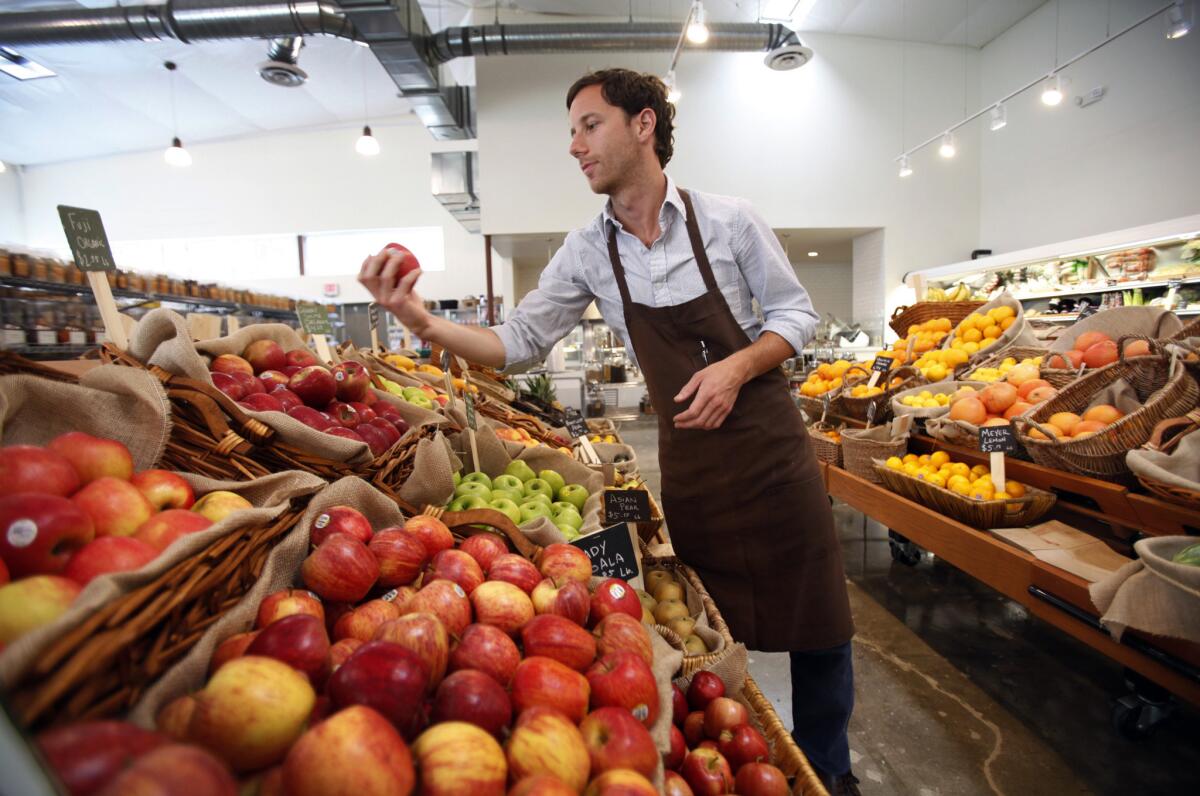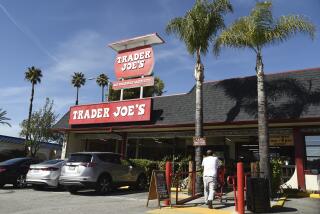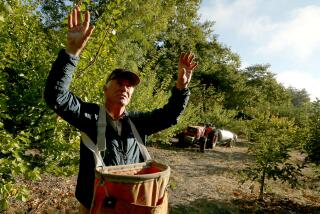Despite the drought, produce prices are staying stable -- why?

Andrew Lambert checks on produce at the Urban Radish grocery store in Los Angeles on July 10, 2013.
California’s drought has driven the prices of some fruits and vegetables up substantially, but others are actually cheaper than they were a year ago. In fact, the U.S. Agriculture Department’s forecast for produce prices predicts modest increases of 2% to 3%.
Why aren’t fruit and vegetable prices skyrocketing in these dry times?
There are several reasons, farm experts say. For one, many produce products are grown in coastal areas that have not been as affected by the drought as the Central Valley has been.
Also, they say, it’s partly because the actual cost of growing the produce makes up only about 10% of the retail price -- the rest covers transportation, handling, packaging and mark-up.
And almost paradoxically, except for the lack of rain, growing conditions have been nearly ideal.
Clear skies and mild temperatures have meant that farmers who have water are harvesting abundant crops much earlier than they normally would have, said Dave Kranz, spokesman for the California Farm Bureau Federation, a nonprofit organization representing farmers and ranchers.
“The drought has been punishing for farmers and ranchers, but the mild weather accompanying it is conducive to having high-quality crops that come on and reach markets a little earlier,” he said.
Strawberries, in particular, have benefited. “It’s stunning how far ahead they are from last year,” Kranz said.
A study by UC Davis last year found that produce prices would be more or less unaffected by the drought because “higher prices at the grocery store of high-value California crops like nuts, wine grapes and dairy foods are driven more by market demand than by the drought.”
The biggest price increases last year, for example, were seen in citrus, but that was largely unrelated to the drought. Instead, it was increasing damage from greening disease in Florida and a December freeze in Southern California that was most responsible.
If you’re looking for bargains, kale is a steal. Though the kale salad seems to have become generally derided as a ubiquitous hipster appetizer, the price of the hardy green has fallen nearly 40% since last year.
Contrast that with resolutely unfashionable iceberg lettuce, which is up more than 15%.
The biggest price increases for fruits and vegetables so far are those for garlic (up 100%), radishes (up 57%), carrots (up 48%), grapefruit (up 45%) and green onions (up 42%).
Some items have remained fairly steady in price, and a few have declined. In addition to kale, best buys include Brussels sprouts (down 14%), limes (down 10%), strawberries (down 8%), asparagus (down 7%) and celery (down 5%).
The figures are from the USDA’s national daily survey of retail prices.
California produces more than half of all the fresh fruits and vegetables grown in the United States, so the effects of the drought will be felt throughout the country.
Of course, predictions are fallible -- and in both directions. Last year, for example, one economist predicted drought-created price increases of 28% to 34% for many crops including lettuce, berries, broccoli, grapes, melons, tomatoes, peppers and packaged salads. Reality fell far short of those estimates.
Are you a food geek? Follow me on Twitter @russ_parsons1
More to Read
Eat your way across L.A.
Get our weekly Tasting Notes newsletter for reviews, news and more.
You may occasionally receive promotional content from the Los Angeles Times.







